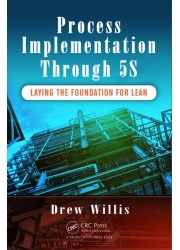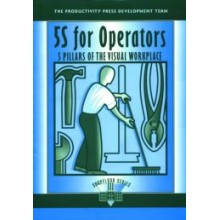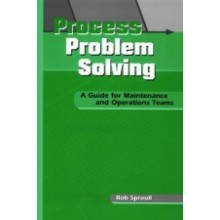Process Implementation Through 5S: Laying the Foundation for Lean
Quantity:
-
Add to Compare
Process Implementation Through 5S: Laying the Foundation for Lean explains how to implement standardized work and visual controls through Plan–Do–Check–Adjust (PDCA). The author uses PDCA to outline the book and explains how 5S (Sort, Straighten, Shine, Standardize, and Sustain) and Standardization are not only foundational parts of the PDCA for your Lean transformation, but are actually PDCA processes within themselves.
The book provides a road map to implement new processes. In addition, it shows how this same implementation process can be used to shore up existing processes and improve upon them. Once you walk through this process with your team, you not only will have laid the foundation for Lean in your organization, but will have laid the foundation for PDCA and for building an army of problem solvers. This transformation is what ultimately will add value to your customer base and drive the business results you are looking for.
These Lean tools are not an end to a means, but rather a means to an end. The purpose is not to implement these tools, check off the box, and then move on to the next area. Rather, they are tools designed to engage your team and help your team see problems, which you then can solve. This is the continuous improvement culture most organizations and Lean leaders see
Table of Contents
Introduction
Overview of the Process
5S Overview
Standardized Work Overview
Background
Culture
Format of This Book
References
PLAN
Identify the Area
Reactive Process Implementation
Proactive Process Implementation
Get a Team
Assess Current State and Set the Goal
Determine If You Have Stability
Set the Goal
Reference
Document and Analyze the Processes
Watch the Work
Document the Steps of the Process and Ask Questions
References
Meet with Your Group and Assign Action Items
Meetings
DO—CHECK—ADJUST
Implement a Pilot
Implement the Final Process, Share Success, and Begin the Next Process
Visual Controls
Standardized Work
Assess Your Goal
SUSTAIN
Auditing
Standardized Work
5S Audits
T-Cards
Training Standardized Work
How to Instruct
MFWC—Multi-Function Worker Chart
References
Conclusion
Write a review
Your Name:Your Review: Note: HTML is not translated!
Rating: Bad Good
Enter the code in the box below:
Copyright © 2014 Engineering Standards Bureau. All Rights Reserved.
Developed By Zoom Into Web







